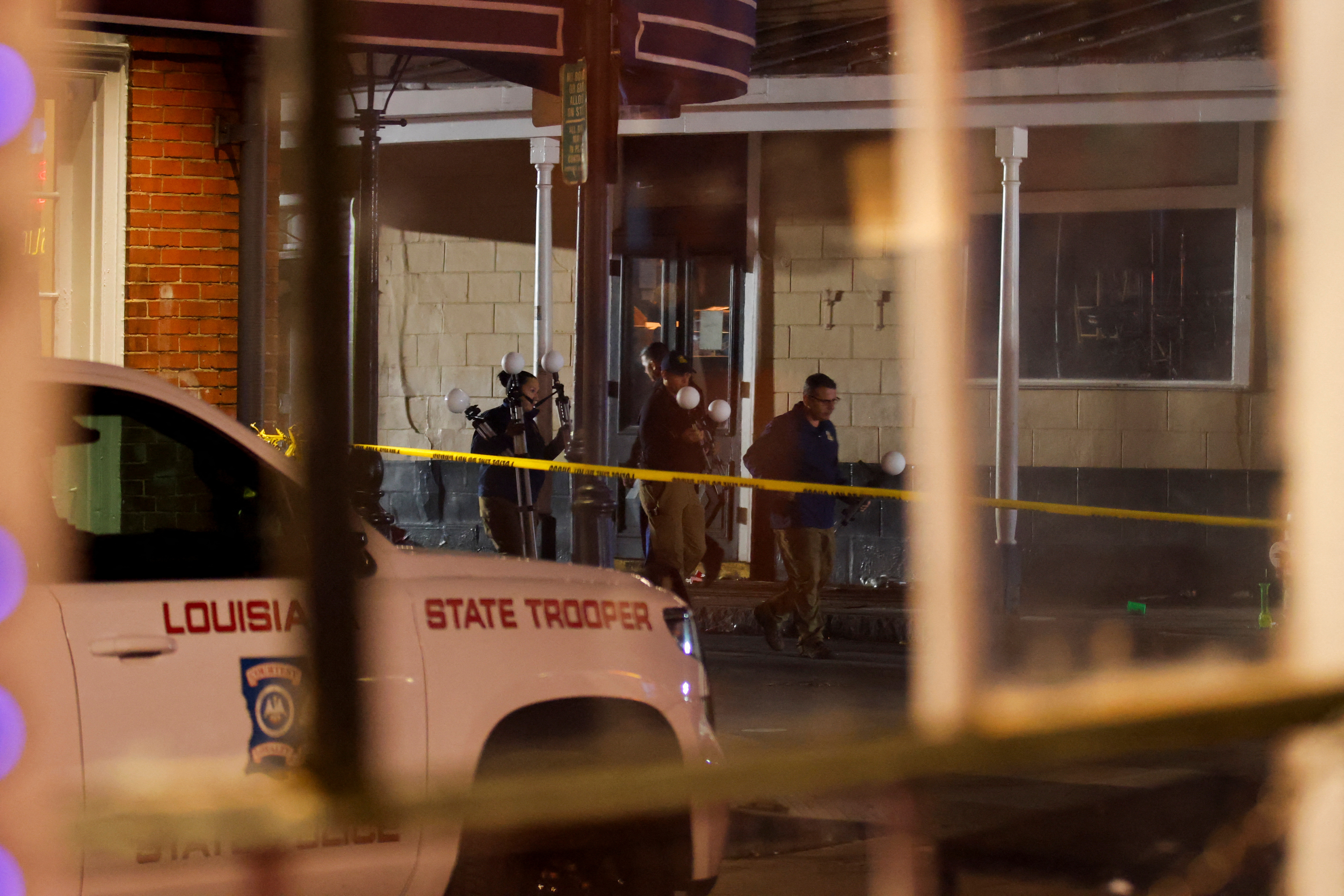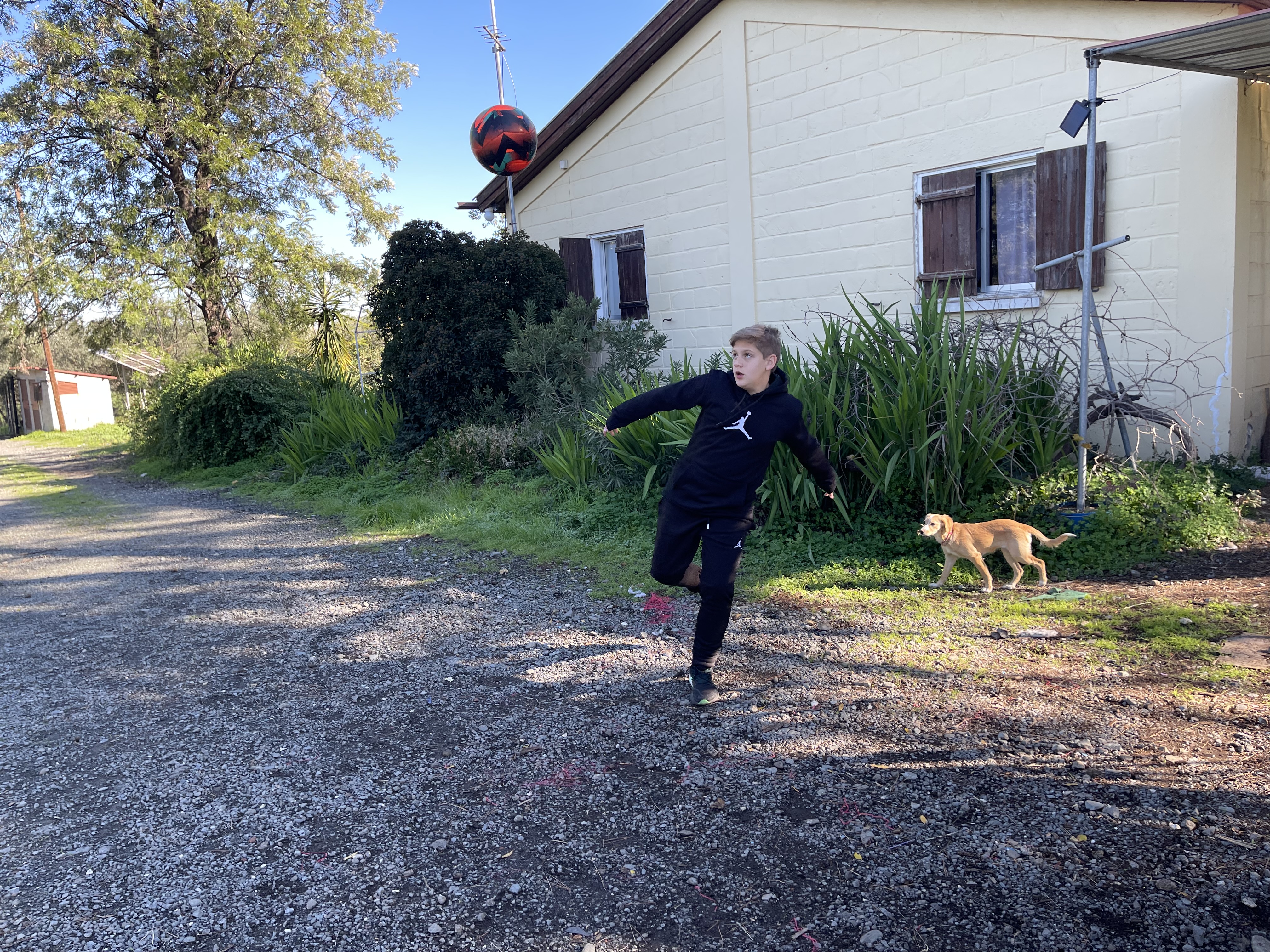A U.S. Army veteran flying an ISIS flag from his truck swerved around makeshift barriers and plowed into New Orleans’ crowded French Quarter on New Year’s Day, killing 15 people in an attack officials said may have been carried out with the help of others.
The suspect, identified as Shamsud-Din Jabbar, 42, a U.S. citizen from Texas who once served in Afghanistan, was killed in a shootout with police after ramming the crowd.
The attack injured about 30 other people, including two police officers wounded by gunfire from the suspect. It took place around 3:15 a.m. (0915 GMT) near the intersection of Canal and Bourbon Streets, an historic tourist destination known for its music and bars where crowds were celebrating the New Year.
Police and political leaders vowed to capture any accomplices.
Police found weapons and a potential explosive device in the vehicle, while two potential explosive devices were found in the French Quarter and rendered safe, the FBI said.
With the perceived danger ongoing, officials postponed the Sugar Bowl, a classic college football game played in New Orleans each year on New Year’s Day. The game between Notre Dame and Georgia was put off until Thursday afternoon as police swept parts of the city looking for possible explosive devices and converged on neighborhoods in search of clues.
The city will also host the NFL Super Bowl on Feb. 9.
An ISIS flag was attached to a staff protruding from the trailer hitch of the rented vehicle, prompting an investigation into possible links to terrorist organizations, the Federal Bureau of Investigation said.
What is Islamic State, the group implicated in the New Orleans attack?
Following are facts about the movement, considered to be more violent and extremist than Al Qaeda.
RECENT OPERATIONS
The Islamic State group on Wednesday claimed responsibility for an attack on a military base in Somalia’s northeastern region of Puntland a day earlier, the group posted on its Telegram channel.
In its statement, Islamic State said the attack was conducted by 12 militants and two booby-trapped vehicles, adding that it killed around 22 military personnel from the Puntland forces and injured dozens of others.
Though largely crushed by a U.S.-led coalition several years ago, IS has managed some major attacks while seeking to rebuild.
They include an assault on a Russian concert hall in March 2024, that killed at least 143 people and two explosions in the Iranian city of Kerman in January that killed nearly 100 people.
It also claimed responsibility for an assault by suicide attackers on a mosque in Oman last year that killed at least nine people.
Aside from its bloody operations in the Middle East, Islamic State also inspired lone wolf attacks in the West.
In August of 2024, authorities said a 19-year-old Austrian suspected of masterminding a planned attack on a Taylor Swift concert in Vienna had vowed allegiance to the leader of Islamic State.
HISTORY
At the height of its power from 2014-2017, the IS “caliphate” held sway over a wide area of Syria and Iraq, imposing death and torture on opponents of its radical brand of Islam. Its fighters repeatedly defeated both countries’ armies and carried out or inspired attacks in dozens of cities around the world.
Its then leader Abu Bakr al-Baghdadi, killed in 2019 by U.S. special forces in northwestern Syria, rose from obscurity to lead the ultra-hardline group and declare himself “caliph” of all Muslims.
The caliphate collapsed in Iraq, where it once had a base only a 30-minute drive from Baghdad, and in Syria, after a sustained military campaign by a U.S.-led coalition.
The new leader, known by a pseudonym Abu Hafs al-Hashimi al-Quraishi, remains shrouded in secrecy.
NEW TACTICS IN THE MIDDLE EAST
IS has switched tactics since the collapse of its forces and a string of other setbacks in the Middle East.
Once based in the Syrian city of Raqqa and the Iraqi city of Mosul, from which it sought to rule like a centralised government, the group took refuge in the hinterlands of the two fractured countries.
Its fighters are scattered in autonomous cells, its leadership is clandestine and its overall size is hard to quantify. The U.N. estimates it at 10,000 in its heartlands.
The movement went underground with sleeper cells that launch hit-and-run attacks, according to an Iraqi government security adviser who helps track IS.
All key foreign fighters fled Iraq for countries such as Afghanistan, Syria and Pakistan. Most have joined Islamic State’s Khorasan branch (ISIS-K), named after an old term for the region that included parts of Iran, Turkmenistan and Afghanistan.
It is active along Iran’s borders with Afghanistan and Pakistan.
Sanaullah Ghafari, the 29-year-old leader of the Afghan branch of IS, has overseen its transformation into one of the most fearsome branches of the global Islamist network, capable of operations far from its bases in the borderlands of Afghanistan.
AFRICA
Islamic State – often called ISIS, ISIL, or the pejorative Daesh – has also made its mark in parts of Africa.
In Uganda, militants from IS-connected rebel Allied Democratic Forces (ADF), staged a series of attacks including a massacre at a boarding school, the murder of a honeymooning couple and a raid on a village that killed at least three people.
The group, which started as an uprising in Uganda, has largely moved its operations to neighbouring Democratic Republic of Congo where it has staged multiple attacks.
Several other groups have pledged allegiance to IS in West Africa and across the Sahel. Affiliates have control of large areas of rural Mali, Niger and northern Burkina Faso and into North Africa.
In January 2023, the U.S. military carried out an operation that killed a senior IS leader in northern Somalia. The U.N. fears militant groups could exploit the political instability in Sudan, which is gripped by a civil war.
OVERALL STRENGTH
The U.S. National Counterterrorism Center has said the threat posed by IS and another militant group al Qaeda “is at a low point with the suppression of the most dangerous elements”.
But it went on to warn that half of IS’s branches are now active in insurgencies across Africa and “may be poised for further expansion”.
It said the group had lost three overall leaders and at least 13 other senior operatives in Iraq and Syria since early 2022 “contributing to a loss of expertise and a decline in ISIS attacks in the Middle East”.
“We do not believe that Jabbar was solely responsible. We are aggressively running down every lead, including those of his known associates,” FBI Assistant Special Agent in Charge Alethea Duncan told reporters, adding that investigators were looking into a “range of suspects.”
The victims included the mother of a 4-year-old who had just moved into a new apartment after getting a promotion at work, a New York financial employee and accomplished student athlete who was visiting home for the holidays, and an 18-year-old aspiring nurse from Mississippi.
BIDEN CONDEMNS ATTACK
U.S. President Joe Biden condemned what he called a “despicable” act and said investigators were looking into whether there might be a link to a Tesla truck fire outside a Trump hotel in Las Vegas. So far, there was no evidence linking the two events, Biden said.
“The FBI also reported to me that mere hours before the attack, he posted videos on social media indicating that he’s inspired by ISIS, expressing the desire to kill,” Biden said of the New Orleans suspect.
CNN, citing officials briefed on the investigation, said the suspect recorded videos in which he mentioned dreams about joining ISIS and contemplated killing his family after a divorce.
ISIS – also called Islamic State or ISIL – is a Muslim militant group that once imposed a reign of terror over millions of people in Iraq and Syria until it collapsed following a sustained military campaign by a U.S.-led coalition.
Even as it has been weakened in the field, ISIS has continued to recruit sympathizers online, experts say.
Public records showed Jabbar worked in real estate in Houston. In a promotional video posted four years ago, Jabbar described himself as born and reared in Beaumont, a city about 80 miles (130 km) east of Houston, and said he spent 10 years in the U.S. military as a human resources and IT specialist.
Jabbar was in the regular Army from March 2007 until January 2015 and then in the Army Reserve from January 2015 until July 2020, an Army spokesperson said. He deployed to Afghanistan from February 2009 to January 2010 and held the rank of staff sergeant at the end of service.
‘SCREAMING AND DEBRIS’
Mike and Kimberly Strickland of Mobile, Alabama, said they were in New Orleans for a bluegrass concert and heading back to their hotel just 20 yards (meters) from where the truck hit some pedestrians.
“There were people everywhere,” Kimberly Strickland said in an interview. “You just heard this squeal and the rev of the engine and this huge loud impact and then the people screaming and debris – just metal – the sound of crunching metal and bodies.”
About 400 officers were on duty in the French Quarter at the time of the incident, including a number who had established a makeshift barrier to prevent anyone from driving into the pedestrian zone, police said.
In response to vehicle attacks on pedestrian malls around the world, New Orleans was in the process of removing and replacing the steel barriers known as bollards that restrict vehicle traffic in the Bourbon Street area.
Construction was due to be completed in time for the Super Bowl. As a temporary measure, police vehicles and officers attempted to provide a barrier, Kirkpatrick said.
“We did indeed have a plan, but the terrorist defeated it,” Kirkpatrick said.







Click here to change your cookie preferences